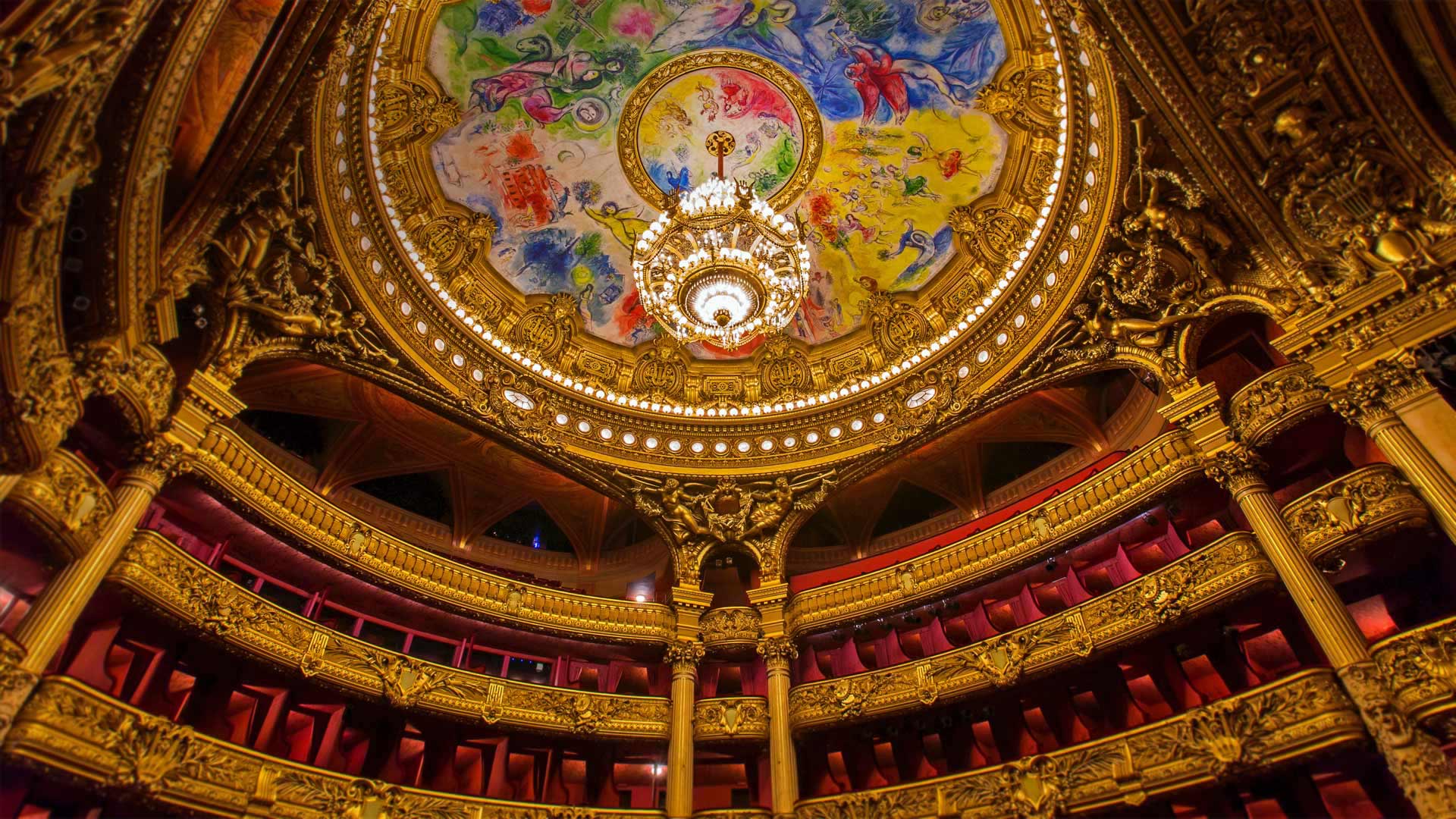
In 1964, the ceiling of the auditorium was updated with a painting by Marc Chagall. It’s not the first time that Palais Garnier has caused controversy with its art choices. They’re part of a modern art installation by French artist Claude Lévêque to celebrate 350 years of the Paris Opera.

Though, if you visit in 2019 you might find the sight of two gold painted tractor tyres a bit bizarre. One of the most famous aspects of the building is the Grand Staircase built from white marble, with beautiful mellow lighting, sculptures and lots of gold – it’s utterly breath-taking and a theatrical setting. The moment you enter its doors to the grand, mirrored foyers, designed for the rich to see and be seen, there’s no doubting that this was meant to be a statement building. Opulent, ornamental, gleaming, glamorous and glitzy – wow factor galore is what the Opera is all about both inside and out. To this day it is one of the largest theatres of the world with 1,979 seats. It was an enormous success and became the showpiece of Haussman’s new Paris. The Paris Opera company founded by Louis XIV in 1669 moved here, its 13th home, on 15 January 1875. Napoleon III died two years before the work was finished. During the course of its construction delays were caused by the discovery of an underground lake, a war in 1870, the Siege of Paris and fall of the Second Empire. When Empress Eugénie, perplexed by the building’s lack of unity, asked him: “What is this style? This is no style, it is not Greek or Louis XVI”, Garnier replied “No, those styles are all outdated, this is Napoleon III”. In creating Palais Garnier, he crafted the architectural style of the Second Empire. The opera house opened on 5 January 1875 and it was to make him internationally famous. Born in rue Mouffetard, Paris, in 1825 he was formally educated but unknown. More than 170 designs were submitted and Charles Garnier, just 35 years old, was the winner. Napoleon III appointed him to carry out a massive urban renewal programme in Paris. It was at a time when Paris was undergoing huge change under the direction of Georges-Eugène Haussmann, commonly known as Baron Haussman. In 1860, the city of Paris held a contest to choose a design for the new opera house. It’s actually not as old as you might think.

Opera Garnier | the Versailles of Opera Houses


Opera Garnier, Opera National de Paris or Palais Garnier, or more known commonly as the Paris Opera, whatever you call it, it’s generally considered to be one of the most important buildings in Paris.


 0 kommentar(er)
0 kommentar(er)
